

Home » What Are the 3 Main Causes of Knee Pain for Cyclists?
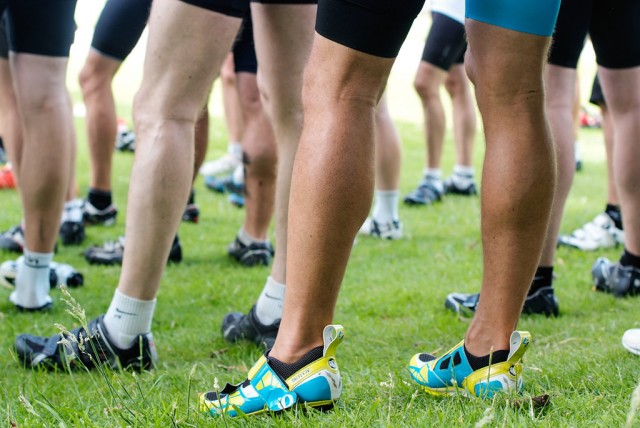
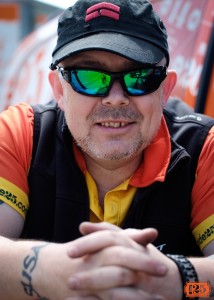 We approached Paul Smith from Cyclometrics for some expert advice. Paul is one of our long standing crew members (commonly known under his nickname ‘Smudge’) and has lead rides from Leeds all the way to Rome this year (several times!!). He is an expert on both the mechanics of the bike and also the body. We asked him to give us his top 3 causes of knee pain for cyclists and here is what he had to say …”
We approached Paul Smith from Cyclometrics for some expert advice. Paul is one of our long standing crew members (commonly known under his nickname ‘Smudge’) and has lead rides from Leeds all the way to Rome this year (several times!!). He is an expert on both the mechanics of the bike and also the body. We asked him to give us his top 3 causes of knee pain for cyclists and here is what he had to say …”
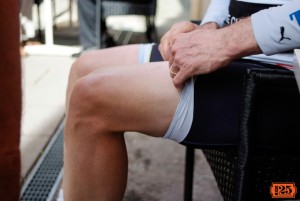 The knee joint is one of the most complex and one of the larger joints within the body. It has a vital role of holding your body weight up and is put through a whole host of pressure during walking, running, jumping and standing.
The knee joint is one of the most complex and one of the larger joints within the body. It has a vital role of holding your body weight up and is put through a whole host of pressure during walking, running, jumping and standing.
It stands to reason then that cycling should be hard on the knees as at an average cadence of 75rpm a cyclist can generate approximately 4500-5000 pedals revolutions in an hour, so on a multi day ride where an average day can be 8hrs in the saddle that’s 36000 times the knee goes up and down and that’s just one of them!
Cycling however is not a full weight bearing activity as unlike walking, running etc your bodyweight is supported and stabilised by the pelvis.
Occasionally though due to varying factors, the knee becomes injured but with over 36000 revolutions per day over 4-5 days it is the hardest working joint on a cyclist.
During Ride25 cycling holidays the three most common knee aches, pains and injuries are as follows.
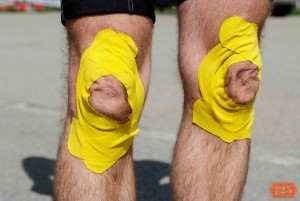
This is an inflammation of a tendon, and usually occurs as a result of overuse (36000 pedal strokes per day)
The symptoms include a pain in the front of the knee below the kneecap (Patella) when pedalling or walking with pressure such as uphill or upstairs. A sharper pain is felt when walking down the stairs as the tendons are jarred and knocked. The aches and pains are usually centred on the lower part of the knee cap where it connects to the tendon.
Some of the common causes are climbing in a bigger gear than necessary, sprinting hard or riding hard early on without pacing yourself
Measures that can be taken to improve this condition would include: adjusting the saddle height as more often than not it will be excessively low; riding in an easier gear; and/or supporting the movement with Rock tape.
To give it its correct title, this is inflammation of the medial patellar femoral ligament (MFPL). This is a band of tissue that runs from the inner of the knee cap to the thighbone.
This is only common in repetitive sports such as cycling (36000 pedal strokes a day) and generally manifests itself as a sharp pain on the inner side of the knee that can be pinpointed to an exact location.
This is generally caused again by a saddle that’s too low and cleats that allow too much float such as SPDs as this causes the knee to work harder to control rotation of the lower leg. Bio mechanical and postural conditions can magnify this such as Knock Knees, Tight IT band and flat feet.
The illiotibial band (IT) is a wide fibrous connective tissue that runs from the top of the hip to below the knee along the outer edge of the thigh.
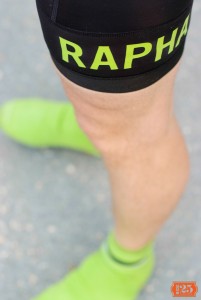 A pain is generally felt on the outside middle of the knee with possibly some swelling below. It generally starts as a mild twinge and builds to a tightening squeezing pain as if the leg has been put in a vice. A sharp stabbing pain is then felt at the maximum friction point between midpoint and bottom of the pedal stroke.
A pain is generally felt on the outside middle of the knee with possibly some swelling below. It generally starts as a mild twinge and builds to a tightening squeezing pain as if the leg has been put in a vice. A sharp stabbing pain is then felt at the maximum friction point between midpoint and bottom of the pedal stroke.
The most common cycling causes are a saddle that’s excessively high or a leg length inequality especially if only one of the IT has symptoms. Incorrectly fitted cleats that are excessively toed in and not centred for float are also a common cause.
To remedy this, a wider stance may be required on the bike by inserting pedal washers between pedals and crank. Having the cleats positioned correctly to make use of their float and having the saddle lowered.
Other solutions are taping and various in the shoe orthotics.
There are a whole host of other knee issues that can arise over the course of multi day cycling. At Ride25 we offer a range of orthotics, tape and accommodations which are carried to allow the cyclist to continue riding throughout the trip.
All in all before embarking on a multi-day cycling holiday adventure, get your bike and yourself assessed as identification, and ultimately prevention is better than cure… there are many great bike fitters out there. Hopefully i’ll see you in the bar on a Ride25 event in 2016 and not on the Rock-Taping table!
Paul Smith – Cytech – Level 3 Mechanic, Bike Fitter and Bio-Mechanics expert
& (Ride25 record holder for return trip from Milan to Leeds in a Ride25 van towing a trailer!)
Cyclometrics.co.uk


Leave a Reply